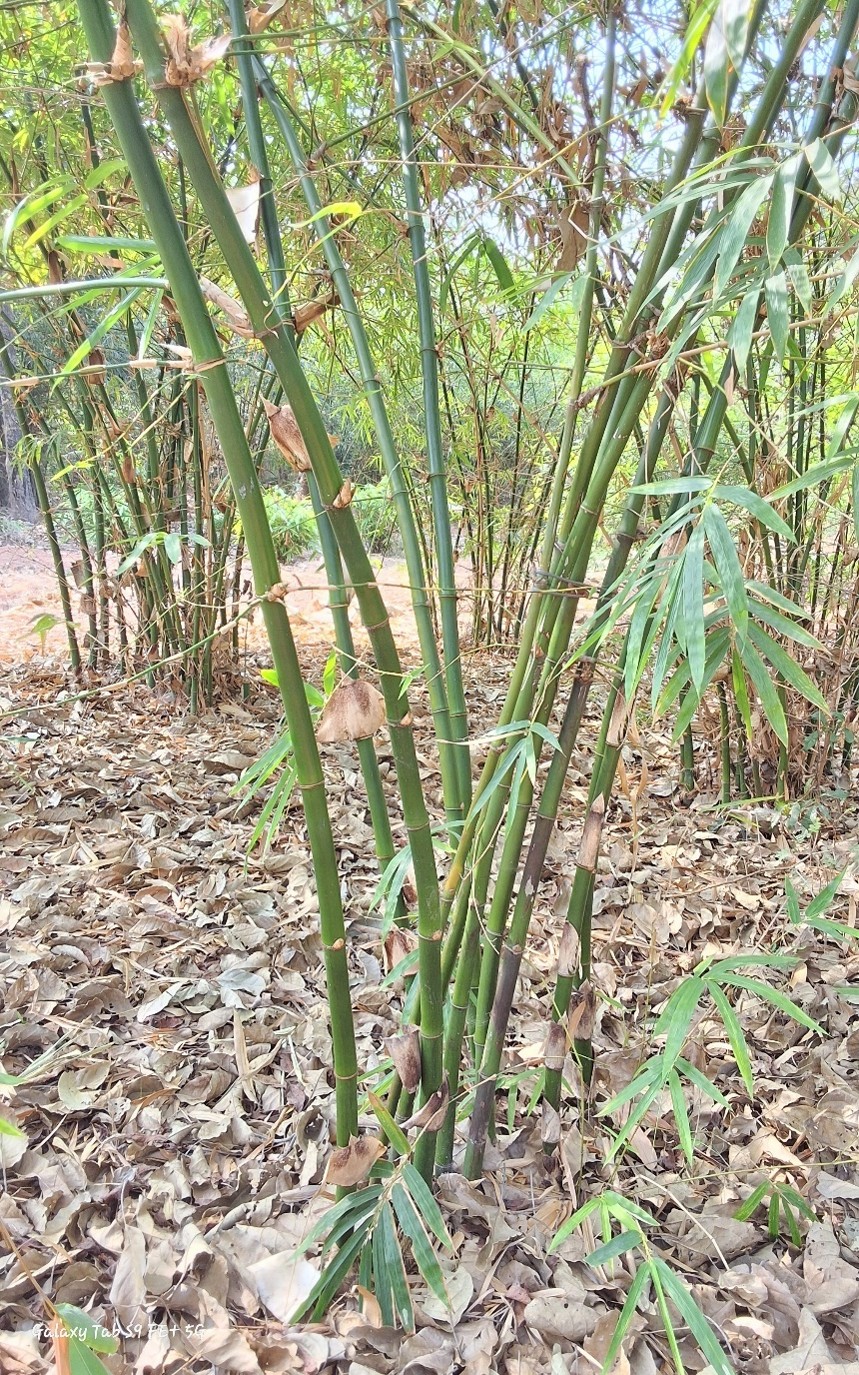Gigantochloa macrostachya

Gigantochloa macrostachya
Gigantochloa macrostachya commonly known as Large-spike Bamboo, is a robust and tall bamboo species native to Southeast Asia, particularly Indonesia. This bamboo species is found in tropical and subtropical regions, typically at altitudes ranging from 500 to 1,500 meters above sea level. It thrives in well-drained, fertile, and moist soils, with a slightly acidic to neutral pH (5.5 to 7), and requires good drainage to avoid waterlogging.
The culms of Gigantochloa macrostachya are clumping, erect, and robust, growing to a height of 15 to 20 meters and having a diameter of 10 to 15 cm. The culms are green, with prominent dark nodes and pale internodes, and the internodes range from 30 to 45 cm in length. The culm sheath is green when young and turns brownish as it matures. The adaxial surface of the culm is smooth and glabrous, while the abaxial surface is covered with fine, soft hairs. The leaf blades of Gigantochloa macrostachya are lanceolate, slightly curved, measuring 20 to 40 cm in length and 4 to 7 cm in width. The leaves have a glossy texture with slight roughness on the edges.
Gigantochloa macrostachya is highly valued for its strength and durability, making it ideal for construction purposes, including scaffolding, poles, and building materials. The thick, strong culms are also used in furniture making, creating durable and high-quality pieces. Additionally, this bamboo is widely used in handicrafts, such as baskets, chairs, and decorative items. Its tall and elegant appearance makes it a popular ornamental bamboo for landscapes and large gardens.
The young shoots of Gigantochloa macrostachya are edible and consumed in various culinary dishes, particularly in Southeast Asian cuisine. The bamboo is occasionally used in pulp and paper production due to its fibrous structure.
The flowering cycle of Gigantochloa macrostachya is long, with flowering events occurring once every 30 to 50 years. Flowering is infrequent, though it has been observed in some regions of Southeast Asia. The inflorescence consists of a large panicle with dense clusters of branches that support numerous small flowers. The flowers have small, inconspicuous glumes, with short stamens and slightly exserted anthers.
Propagation of Gigantochloa macrostachya is typically done through vegetative methods, such as culm cuttings, which root easily when planted. Clump division is also a popular method, allowing for rapid growth and expansion. Tissue culture is used for commercial propagation to maintain uniformity and ensure healthy plant growth. Although Gigantochloa macrostachya produces a limited number of seeds with low viability, these seeds are dispersed by wind, though natural seedling establishment is rare.
In summary, Gigantochloa macrostachya is a versatile bamboo species known for its strength, durability, and wide range of uses, including construction, furniture making, handicrafts, ornamental purposes, and edible shoots. Its robust and tall stature, along with its fibrous structure, make it an important species in both commercial and ornamental bamboo cultivation.
Listen Audio:
Need assistance? BRTC Faculty